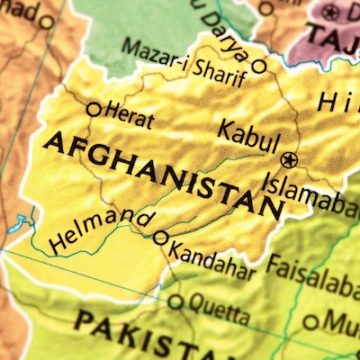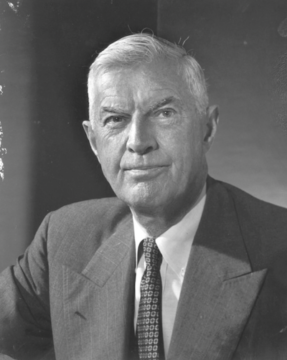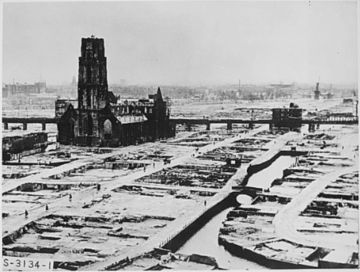by Mark Harvey
 Someone described the US Federal Government as a huge insurance company that has its own army. There’s real truth to that description. The vast majority of the federal budget goes to Social Security, Medicare, and Medicaid. Those entitlement programs take up about 65% of the federal budget, while the military takes up about 11% of the federal budget. The interest on the federal debt takes up another 8%, leaving only about 15% for “discretionary” spending. The money spent on the military is also considered discretionary but given our vast reach with hundreds of military bases in dozens of countries, voting to reduce the military budget much would be political suicide.
Someone described the US Federal Government as a huge insurance company that has its own army. There’s real truth to that description. The vast majority of the federal budget goes to Social Security, Medicare, and Medicaid. Those entitlement programs take up about 65% of the federal budget, while the military takes up about 11% of the federal budget. The interest on the federal debt takes up another 8%, leaving only about 15% for “discretionary” spending. The money spent on the military is also considered discretionary but given our vast reach with hundreds of military bases in dozens of countries, voting to reduce the military budget much would be political suicide.
The word discretion implies both the freedom to choose and sound judgment. So discretionary spending on the federal level might lead one to infer that the spending is done with good judgment. Our government receives vast sums of money through taxes and like a good frugal household never spends more than its annual revenues, with some savings set aside for a rainy day. (Insert percussive sting made after a weak joke). Actually, the federal government spends money like your deadbeat uncle with intermittent employment, too much familiarity with how the lotto works, and numerous investments in machines that purport to have finally succeeded on the concept of perpetual motion. This is not your Shaker family living with simple furniture and within its means.
 Last year the federal government took in $3.4 trillion of taxes and spent $6.6 trillion, nearly twice its revenues. A trillion dollars is a vast, almost inconceivable amount of money. And yet our government spends money in such cosmic sums that congresspeople and senators toss around the word trillion as if it’s the cost of a night’s stay in a Motel 8. Perhaps the two best quotes about casually spending and losing vast sums of money come from the late Texas oilman Nelson Bunker Hunt. When asked about his $1.7 billion losses after he tried to corner the silver market, he replied, “A billion dollars isn’t what it used to be.” Then at a congressional hearing when asked about his net worth, Hunt replied, “I don’t have the figures in my head. People who know how much they’re worth aren’t usually worth that much.”
Last year the federal government took in $3.4 trillion of taxes and spent $6.6 trillion, nearly twice its revenues. A trillion dollars is a vast, almost inconceivable amount of money. And yet our government spends money in such cosmic sums that congresspeople and senators toss around the word trillion as if it’s the cost of a night’s stay in a Motel 8. Perhaps the two best quotes about casually spending and losing vast sums of money come from the late Texas oilman Nelson Bunker Hunt. When asked about his $1.7 billion losses after he tried to corner the silver market, he replied, “A billion dollars isn’t what it used to be.” Then at a congressional hearing when asked about his net worth, Hunt replied, “I don’t have the figures in my head. People who know how much they’re worth aren’t usually worth that much.”
Before I come across as a fiscal hawk who wants to starve grandparents needing social security or the poor needing assistance, I want to say that I’m not. I support programs that help the marginalized move forward and thrive. I support spending trillions on our infrastructure and trillions on our education system (as if that will ever happen). That’s discretionary spending I can get behind because it’s a form of investment that would likely pay huge dividends nationwide.
But when I see our government spend trillions of dollars on wars and nation-building in Afghanistan and Iraq, I question the discretion. That was our set of improvident uncles with fancy titles sending young men and women to fight wars in countries they little understood. The wars killed and maimed thousands of ours and hundreds of thousands of theirs and while I’ve never been to either country, I don’t see how it’s made us safer or them much better. We spent between $1 trillion and $2 trillion on the war in Afghanistan, depending on how you do the figures. One trillion is the figure cited for direct costs during the war; $2 trillion is the figure that includes the financial duty and veteran care related to the war. If it seems kind of weird that there isn’t a more exact figure of how much the Afghanistan war cost us, please refer to the folksy wisdom of Nelson Bunker Hunt: a trillion dollars aint what it used to be.

Afghanistan’s informal moniker is “The Place Where Empires go to Die.” Today the state department has a level 4 warning about travel to Afghanistan that says, “Do not travel to Afghanistan due to civil unrest, armed conflict, crime, terrorism, kidnapping, and COVID-19. Aside from the COVID-19 bit, that would have been a good warning to those who took us to war back in 2001. The warning might have included, “In addition to crime, terrorism and kidnapping, previous world powers including Great Britain and the Soviet Union spent vast amounts of treasure here, lost many soldiers, and still lost their wars despite the fact that Afghanistan is one of the poorest countries in the world. Pickpocketing is also rampant.”
Twenty-twenty hindsight can make us smug in our judgment of foreign policy and it should be remembered that after the destruction of the twin towers in New York that day in September 2001, Americans were hungry for retaliation. It should be remembered that Afghanistan in the 1990s before the war was, well, a war zone that millions of Afghans had fled, a hellhole for women and girls, and a place dominated by the Taliban. The word Taliban is, ironically, the word for student in the Pashto language. And I guess members of the Taliban are students of a form, if your idea of a syllabus is the pre-Islamic code of sharia. When American troops went into Afghanistan, millions of exiled Afghans returned to the country hoping that things would change and modernize. For some girls and women, it did change for a few years, giving them better access to schools and universities.
But I would challenge anyone reading this to name the major Afghan provinces, to find Afghanistan on an untitled map, to cite its total population, or to name two neighboring countries without consulting the Internet. I would guess that 95% of Americans couldn’t complete all four of those tests successfully and yet millions of Americans are up in arms about our sudden departure from the country. Whether our departure was wise or well planned, can you, esteemed reader, name a battle in Afghanistan that gave you either soaring hope or a sense of doom for our country? Even as a bit of a news junky and a history buff, the Afghanistan war is a blur to me and something I never really understood. Yet we spent $300 million per day on that war for 20 years.
Were it possible to rebuild Afghanistan for a couple of trillion dollars, give women there access to education, and create a nation-state free of terrorist incubation, it might well have been worth it. As the immediate aftermath has shown with the Taliban—those bespectacled “students” with their Kalashnikovs–taking control of the country less than two weeks after our withdrawal, it didn’t really work. Is there something to learn and can we learn?
Even adjusted for inflation, we spent more in Afghanistan over the last 20 years than we spent on the entire Marshall Plan rebuilding Europe after World War II. As in 10 to 20 times more. Comparing the Marshall plan to the war in Afghanistan is a telling and sobering exercise that puts into harsh relief how we got it right in the late 1940s and how we got it so wrong this century.
The Marshall Plan is a big topic and warrants a book—dozens have been written about it. But it goes something like this. After World War II, the most powerful European economies were in tatters. There was mass starvation, tens of millions of Europeans were homeless, inflation rates were over 50% in some countries, and trade was sluggish. The German economy was particularly devastated by the war as one would expect. The American public was tired of war and eager to return to normal life. So the idea of investing billions of America’s taxpayer dollars to rebuild post-war Europe was not very popular. The idea of investing billions into Germany was particularly unpalatable to Americans.
Plenty of Americans, public and private, preferred to retreat into isolationism and let Europe fester. But a few men had an inkling that a quick European recovery was vital to the American economy and American security. In particular, George Kennan, a 43-year-old Soviet expert believed that leaving western Europe to recover on its own would lead to it becoming quarry for an aggressive Soviet Union. Other American industrialists such as the cotton growing magnate and undersecretary of state for economic affairs Will Clayton believed that keeping Europe out of an economic depression was key to keeping the American economy strong.

One of the most efficient documents you’ll ever read is titled The European Crisis and was written by Clayton in 1947, two years after the end of World War II. In three terse pages, Clayton outlines the post-war European problem, the solutions to that problem, and the consequences to Europe and the United States if the problem were not solved. The problem as Clayton outlined was that Europe was short on coal, quickly turning its grain fields into pasture as the city-to-country economy was fractured, its people had lost confidence in local currencies, trade between nations was severely reduced, and shipping had broken down. His solution was to provide Europe with six or seven billion dollars of goods each year for three years, sell Europe surplus ships, and unify the European economy, avoiding, in his words, “small watertight compartments as it is today.” Clayton wrote that letting Europe drift without aid would lead to revolution and political disintegration in Europe and would lead to “disastrous” effects on the American economy.
In other words, the leading American foreign policy thinkers at the time saw rebuilding Europe after the war as a form of enlightened self-interest. Enlightened self-interest is when you help another country or person because it ultimately helps you. Clayton was candid and blunt in expressing America’s interest in the Marshall Plan: “Let us admit right off that our objective has as its background the needs and interests of the people of the United States. We need markets — big markets — in which to buy and sell.”
The wisdom of General George Marshall (for whom the plan was named), Kennan, Clayton and the others who quickly saw the need to rebuild and integrate Europe is a study in forbearance. That wisdom was particularly evident when it came to Germany’s Ruhr Valley. The Ruhr Valley at the time was Germany’s industrial powerhouse. It had vast amounts of coal and coke, essential for producing steel, as well as giant steel plants. When the war ended, the allied powers took control of managing the Ruhr Valley assets and the French in particular were very leery of relinquishing control to the Germans.

By 1949, The brain trust behind the Marshall Plan wanted to ease restrictions over German control and production in the Ruhr Valley and avoid renewed economic hostilities and the cartelization among European nations. In what is a vast oversimplification of the ensuing negotiations, the US pressure to integrate the European economy likely lead the then French foreign minister Robert Schuman to propose The European Coal and Steel Community (ECSC). The ECSC was a treaty signed by France, Germany, Belgium, The Netherlands, Luxembourg, and Italy into forming a common and free market for steel and coal among themselves, breaking down trade barriers such as tariffs, and also breaking down the stronghold that German steel barons had over the production of coal and steel.
Historians credit The ECSC and the cooperation among its six original members as being the precursor to the European Union. Its formation and success eventually lead to today’s EU. In the following 30 years after World War II, Western Europe experienced an economic rebound never before seen on the continent. The French called it Trente Glorieuses (The thirty glorious), the Germans called it Wirtschaft Swunder (economic wonder) and the Italians called it the Miracolo Economico (economic miracle).
It’s impossible to put an exact figure on the importance of The Marshall Plan to the success of western Europe’s recovery. But most economic historians describe it as jumpstarting production and free trade in the region. Without billions of American dollars and some enlightened self-interest in pressuring post-war Europe to create a common market, the recovery there would have taken much longer and might have taken a much worse course.
Comparing our ventures in Afghanistan to the Marshall Plan might seem like a stretch and that’s because the two ventures were so contraposed. One involved considerable study, economic analysis, and a thorough understanding of a region with cultures similar to our own. The other involved a month of planning (US forces went into Afghanistan less than one month after the attack on September 11, 2001) and then twenty years of unformulated “nation-building”. The Marshall Plan, in my opinion, and in the reading I’ve done, really did make us more secure and ultimately wealthier. The war in Afghanistan definitely made us poorer—more than a trillion dollars poorer.
A trillion dollars happens to be the cost of the infrastructure plan recently passed in the US Senate. It’s been whittled in half from the original $2 trillion that President Biden proposed. Still it’s kind of like a Marshall Plan for us, a country that badly needs to fix its roads, bridges, rails, ports, and broadband. Of the trillion dollars, about a $100 billion would go to roads and bridges, $66 billion to railroads, $65 billion to the power grid, $65 billion to broadband, $55 billion for water infrastructure, $25 billion for airports, $39 billion for public transport, with the remaining billions going to other worthy programs. It’s a plan that’s hard to argue with and actually had the overwhelming support of an otherwise bitterly divided senate.

If you’re undisciplined and delve into the woulda-coulda-shoulda scenarios as I do, well here’s a juicy one you can stew on. For half the money we spent on nation-building in Afghanistan we could have built a robust network of high-speed rail in the United States. If you’ve ever had the privilege of traveling on the high-speed rails of France, Italy, Japan, or China, this is one to really enervate your woulda-coulda-shoulda imagination. The only times I’ve ever regretted a public transit trip’s end was on a high-speed train in France or Italy. Their trains are so comfortable and so fast that getting from Rome to Bologna or Paris to Montpelier is just a smooth wash of spectacular scenery punctuated by lots of legroom and really good dining car food. The experience is so agreeable that the transport authorities there should really add a surcharge for strengthening your mental health.
The flight from Boston to New York takes about an hour by plane, but I challenge you to find one cramped Boston commuter who has ever regretted putting the tray table up, eating the last of the stale peanuts, and disembarking in LaGuardia. Today Amtrak trains rattling from Boston to NY take about four hours. A high-speed train could do it in less than two hours. For some bizarre reason, the nation that put a rover on Mars that sends back shockingly good images of that red planet to earth continues with railways only missing the shooka-shooka sound and the steam-coal plumes of the trains of the old west. Some of that bizarre reason has to do with spending your trillions of taxes in Afghanistan instead of here on planet USA. Call your senator!
Without going into a chest-thumping patriotic froth, Americans have over the years shown a remarkable capability to solve problems with new thinking and inventions. From the first flight at Kitty Hawk to the landing of Viking I on the Golden Plains of Mars in 1976, from the first solar cell (1883, Charles Fritts, New York) to the polio vaccine (Jonas Salk, 1953). When we apply ourselves with forbearance and levelheadedness, there really is little we can’t accomplish. Especially with the vast sums of tax revenue collected every year by the federal government.
It’s the ambitious warmongers who couldn’t tell a Pashtun from Shinola that get us into trouble and go spending vast sums of money on an unmanageable far-off country that will probably never have our style of democracy. That was “discretionary spending” done without discretion. To quote the humorist P.J. O’Rourke, “It is a popular delusion that the government wastes vast amounts of money through inefficiency and sloth. Enormous effort and elaborate planning are required to waste this much money.”
